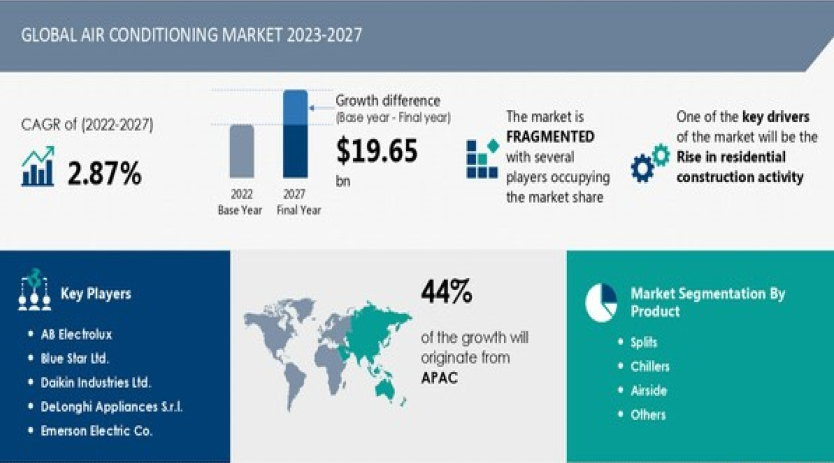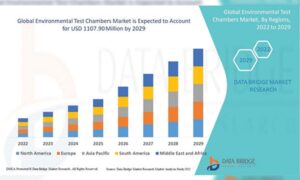APAC is estimated to account for 44% of the global market growth as the demand for refrigerators and air conditioners increases.
The air conditioning market size is expected to grow by USD 19.65 billion from 2022 to 2027, progressing at a CAGR of 2.87% as per the latest Technavio market research report. APAC is estimated to account for 44% of the market’s overall growth. The demand for pricey home appliances like refrigerators and air conditioners increases as disposable income rises in nations like Vietnam, China, and India. The demand for comfort also grows along with income, which fuels the demand for air conditioners. The primary factor behind the rise in household air conditioner sales is the migration of air conditioners from bedrooms to living rooms and vendors are expanding their product lines to include more efficient air conditioners in response to the region’s price-conscious consumers.
Air Conditioning Market: Rise in residential construction activity to drive growth
- The increasing demand for inverter air conditioners significantly drives market growth.
- The newest technology available for air conditioners is inverter technology. As compared to other conventional air conditioners, the technology is intended to save over 35–45% of electricity and the technology was created in Japan.
- It is highly sought after by the refrigeration and air conditioning industries. Based on the temperature of the room, the system modifies the refrigerant’s flow rate and when the heat is lower, the technology decreases the flow rate and vice versa.
- Furthermore, the compressor is also not shut off by this technology.
- Hence, the increasing demand for inverter air conditioners to save energy will drive the growth of the global air conditioning (AC) market during the forecast period.
Air Conditioning Market: Increase in the use of R32 refrigerant in split ACs
- Increased adoption of omnichannel distribution and multichannel marketing is an emerging trend in market growth.
- Residential users’ preference for online shopping for home goods, including air conditioning products, has grown significantly over the past few years.
- The market has been stimulated by the expansion of the online retail sales channel and the use of multichannel business models. Several suppliers, including Midea, sell their goods both offline and online.
- Moreover, the products also have greater visibility due to the online channel. This, along with the accessibility of a broad product selection, helps to fuel the expansion of the online retail sector.
- Hence, such trends influence the growth of the air conditioning market during the forecast period.
Some of the key Air Conditioning Market Players:
The air conditioning market is fragmented and the vendors are deploying organic and inorganic growth strategies to compete in the market.
AB Electrolux, Blue Star Ltd., Daikin Industries Ltd., DeLonghi Appliances S.r.l., Emerson Electric Co., Fujitsu Ltd., Haier Smart Home Co. Ltd., Hitachi Ltd., Honeywell International Inc., Johnson Controls International Plc, LG Electronics Inc., MIDEA Group, Mitsubishi Electric Corp., Panasonic Holdings Corp., Samsung Electronics Co. Ltd., Trane Technologies Plc, Transform Holdco LLC, Toshiba Corp., Voltas Ltd., and Whirlpool Corp.
Cookie Consent
We use cookies to personalize your experience. By continuing to visit this website you agree to our Terms & Conditions, Privacy Policy and Cookie Policy.














